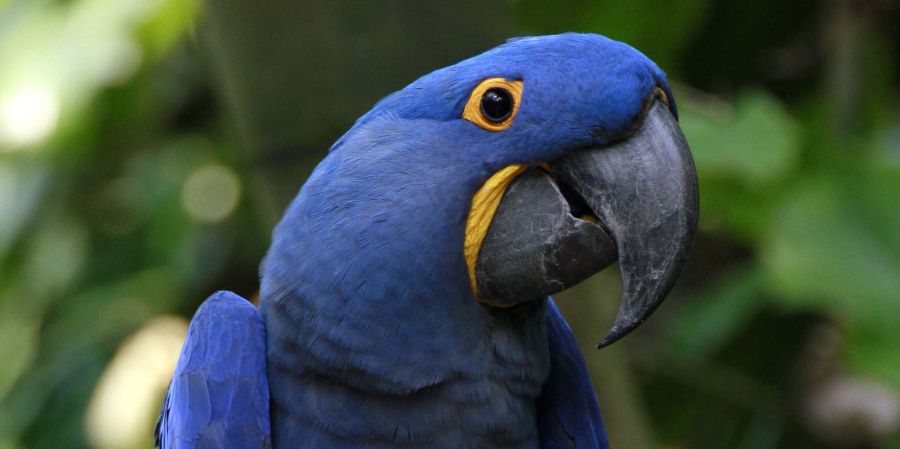

Macaws are one of the most colorful and charming birds found in South America, especially in Brazil. They are members of the bigger parrot family and their size, bright plumage and rather raucous behavior make them difficult to miss among the jungle canopy. This brilliantly bright tropical bird may be found across the Amazon and Pantanal regions, and here's everything you need to know about it.
1.Macaws have a stunning appearance that is well suited to their surroundings
These birds have striking plumage that is unexpectedly well-suited to the Amazon jungle's bright fruits, flowers and vibrant green canopy. Macaws come in a variety of vibrant color combinations, such as blue, gold or green and scarlet, and they have gorgeous long flowing tails. the facial feather pattern of a macaw is extremely unusual, and it is said to be as unique as a fingerprint. their first and fourth ties point backward, and they have lengthy toes and strong claws that they use to cling onto trees and explore objects. Their powerful beak has also been noted as third leg!
2.Macaws are the largest parrot species
There are over 376 species of parrots in this world, with macaws being the largest. The Hyacinth macaw, the largest species, may grow up to 3.5 feet in length, with a wingspan of roughly 4 to 5 feet, and is frequently seen on tours of Brazil's Pantanal. The largest macaws weigh between 2 and 4 pounds and have particularly light bones that help them fly.
3.The tropical rainforest is the preferred habitat.
Macaws are widespread in South and Central America, ranging from Southern Mexico to Northern Argentina. They favor rainforests, but they also live in various types of forest, as well as woodland and savannah-like environments. The blue and yellow macaws, the scarlet macaws, and the red and green macaws, among others, are all common in the Amazon.
4.Macaws and poison have an odd relationship.
Fruits, seeds, leaves, flowers and nuts make up the majority of their food. Most species have a strong powerful beak that they utilize to crack open nut shells, even tough foods like coconuts. Macaws can be found congregating at clay licks along river banks in the Amazon, where they graze on the moist soil. There are a variety of explanations on why they do this. It could be a way for them t neutralize the toxins in their fruits and seeds rich diet while also assisting digestion. Others have pointed out that clay licks are an important source of minerals, particularly sodium, which is difficult for animals in the rainforest to obtain. While macaws appear to be immune to the disease.




